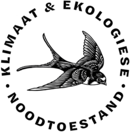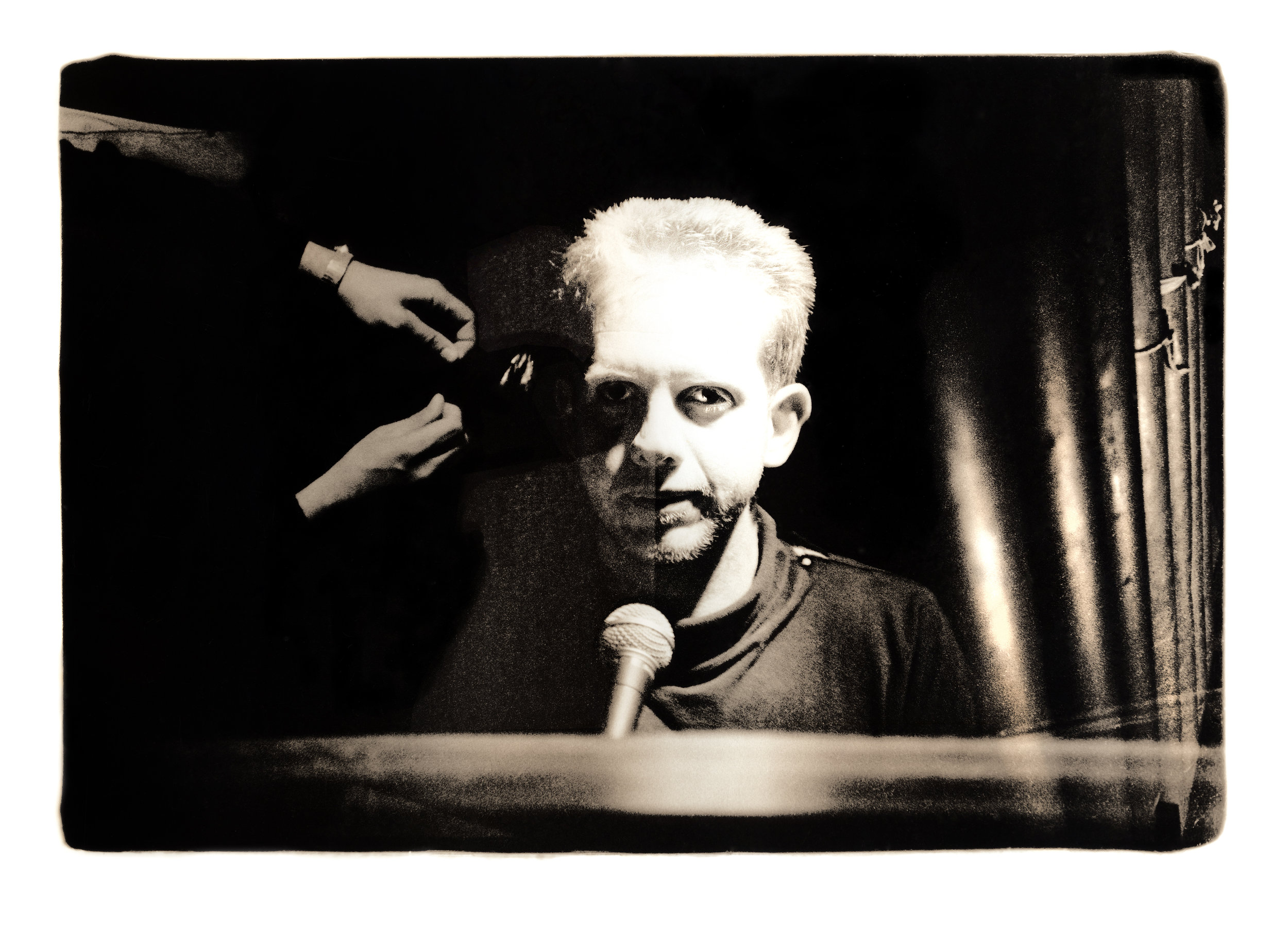Pierre le Riche se kunswerke bepeins die pad vorentoe

Vat jou goed en trek, Ferreira
Pierre le Riche se uitstalling Portable Heritage het by SMAC Stellenbosch gewys tydens Woordfees. Ons deel Isabella Kuijers se oorsig van dié liggaam werk.
Utopian Destinations and Troubled Journeys: Afrikaner Cultural Trajectory in Pierre le Riche’s Portable Heritage
Isabella Kuijers
Was Apartheid the product of some horrific shortcoming in Afrikaner culture? Could one find the key in Afrikaner songs and literature, in beer and braaivleis? How do I live with the fact that all the words used to humiliate, all the orders given to kill, belonged to the language of my heart? - Antjie Krog, Country of my skull
Dominant minorities are rare but not without precedent. The white, Afrikaans ruling class of the apartheid era composed no more than ten percent of the population, in a 1960 census, at the zenith of its half century of power. During this time, the iconography and mythology of the Afrikaans held sway. The dominant narrative was of an intrepid Afrikaans history and divinely preordained entitlement to the land-of-milk-and-honey. The symbolic imagination and strict dogma of this period was formed by and formed Afrikaans-ness in a reflexive cycle.
In the years since, the status of Afrikaans culture in a ‘rainbow nation’ has altered in complex ways. White Afrikaners can benefit from forms of privilege that allow them to move more easily around South Africa and the world than non-white South Africans – and indeed many have done. In his dissertation, Le Riche notes that between the years 1995 and 2005, sixteen percent of the white South African population emigrated – an enormous chunk of the population. Despite lingering benefits of political domination, the size of the Afrikaans population, uncertainty about the protection of their interests and psychological shifts in post-1994 South Africa have manifested as feelings of both ‘cultural refugeeism’ and as efforts to redefine what it means to be Afrikaans.
Pierre Le Riche’s Portable Heritage is a cogent response to both, examining attempts to re-craft an Afrikaner identity with a fond, albeit critical, use of the raw materials of his heritage. The collection of works comprises mixed media sculptures and installations which are, conspicuously, packable and portable. Raw wooden shipping crates are lined with foam to soften the jerks and bumps ahead. The elements – ready for disassembly and storage at a moment’s notice –are drawn from Afrikaner artefacts such as spindle chairs (tolletjiestoele); functional pieces of furniture produced on farmsteads and by Voortrekker pioneers.
Portable Heritage comes at an introspective period in the reimagining of the Afrikaner culture in the years since the 1994 election, when the necessary effacement of the symbolism of the Calvinist, patriarchal, nationalist regime is felt to extend to parts of the Afrikaner psyche. There lurks the assumption that a denial and disavowal of personal Afrikaner identity is necessary in order to move towards a new national identity and for the successors of settlers to eventually claim to be home.
What would you take if you had to pack up your heritage?
Which heirlooms are untainted?
What could you still live with?
These are tragically ironic questions, given the forced removals and redistributions of apartheid, but the Afrikaner is not exceptional in having been at one point or another both the oppressed and the oppressors along the murky trudge of history. And it is in reaction to the enduring effects of South Africa’s ethnic segregation that Portable Heritage cogently examines the paradoxes of building a liberal democratic nation; “forging identity and at the same time accepting difference[,] negotiating between universalism and particularism” (Vestergaard, below).
Modular Heritage is made up of scaffolding monads that behave like a set of Meccano pieces. Using these modular forms, Le Riche sketches out a skeletal church building with a bulbous white bell nesting in its spire. This form swells to fill the volume of the gallery space and, when the time comes, retreats compactly into its crate.
The pieces of a disassembled icon here do not break but leave the possibility of reassembly and recreation. Unyoked by segregationist sentiment in its architects, these building materials can be fashioned into a multitude of possible forms. And while the individual pieces are fragile and breakable, especially the porcelain spindles that connect the wooden struts, it has the capacity as a whole to bear the weight of its bell – an object lesson in those mythical qualities of strength and adaptability.
Portable Heritage takes familiar artefacts and revises them, unsettling and packing them up with that strange feeling of moving house. This poignancy is at its most palpable in Enshrining Loss.
Enshrining Loss comprises three stackable drawers whose contents are the result of failed experiments with wood turning. In some, the grain of the wood has rebelled against the craftsman and in others the lathe has stripped away too much and accidentally amputated twigs. Some are ribbed and rosary-esque, others come close to being chair legs or recorders or flutes (phallic but for their dangerous splinters), spindles, spools, syringes or screws. These rejected objects, in an array of sumptuous wood-tones, are organized like insects in an entomologist’s cabinet representing a taxonomy of trial and error.
In a similar vein to Willem Boshoff’s Stokkiesdraai (1980) Le Riche considers the process of whittling a contemplative one - a conscientious deconstruction of the forms that construct ones’ visual history. Hoping to come to a pithy core; answers to the questions facing white South Africans:
What is an ethical way to live with white privilege?
Are we welcome?
Are we culpable?
It is hard to gauge the pervasiveness of these concerns. I would estimate that the rapid uptake of academic terminology and the fact that the most racial interaction happens in and around cities indicates that the dialogue surrounding privilege has shallow urban epicenters. Yet everywhere the conversation is fraught. Le Riche points to academic Samantha Vice whose controversial text How Should I Live in This Strange Place? advocates an attitude of humility and shame on the part of white South Africans. Her message is echoed by Eusebius McKaiser in his Mail & Guardian article Confronting Whiteness. Interestingly, McKaiser writes:
Vice acknowledges that many whites resent the fact that they did not choose to be white or to benefit from being white. Indeed, some whites opposed apartheid. But shame and regret are not moral emotions that you should feel only when you did something wrong yourself.
The idea that evoking a feeling is a necessary component of an ethical behaviour is absurd – unless we are being asked to partake in a spectacle that moves us towards a more moral society. Perhaps the shame Vice and McKaiser advocate cultivates a reaction against the perpetuation of injustice, as a means of social transformation. The way a room full of people watching a terribly cringe-worthy comedian will feel embarrassment without having actively done or said anything themselves. The production of these negative stimuli may be a way of keeping our consciences alert to the often obscure ethical dilemmas that we face. In my culture various unethical behaviours persist as normal – eating meat for example or certain kinds of consumerism. Perhaps feeling is the fix. The white political silence Vice supports, isn’t.
The ascetic chamber of The Solitaire Box provides a space for self-scrutiny but also a hidey hole. The claustrophobic proportions force Le Riche to crouch into Rodin’s Thinker’s pose, his face hovering above an unbalanced game of solitaire. The concise metaphor for inhibition is augmented by the addition of a burning Cape Dutch house, the home of the Afrikaans poet Totius. The image of the flames leaping behind the gable is meticulously cross-stitched. The small space spells out the dilemma that leads to inaction. It asks the burning question of what move to make without causing the marbles to clatter to the floor of the tiny lair while the metaphysical threat of fire and brimstone lingers in the collective unconscious. Muscles cramping, sweat prickling. To propose any outcome is to lose.
In Keep Your Seat six leather-strung yellowwood seats are set into foam in a low box. The idiom commands passivity but also references the social and geographical mobility that white privilege affords. The configuration resembles the facets of a cottage pane window with the leather thongs creating a cobwebby mesh that excludes the viewer like burglar bars. Cyphers for exclusion, isolation and monastic meditative pursuits pervade Portable Heritage. The question of how to dissolve boundaries without dissolving a sense of cultural dignity is answered in various ways in Who's Got the Map? The Negotiation of Afrikaner Identities in Post-Apartheid South Africa, by Mads Vestergaard.
In this discussion of the trajectories of Afrikaner identities, Vestergaard observes the strategies for ensuring the continuation of some essential element of Afrikaans-ness, one being the formation of Orania (a white-only settlement in the Northern Cape) and another being the re-framing of Afrikaans as foremost a linguistic grouping rather than an ethnic one. He cites Frederik van Zyl Slabbert, who writes: “Afrikaners will have to apply themselves imaginatively to the task of establishing who they are in the new South Africa. In the process they will have to free themselves from a part of their history and work to create a new one.” Since Apartheid, the Afrikaans language has strengthened, more books are published in Afrikaans and more music is recorded with Afrikaans lyrics. The “magazine Huisgenoot has the largest readership of any magazine in the country” and the inclusion of diverse racial groups under the cultural umbrella of Afrikaans has lead to “Die Burger, the old NP mouthpiece, now [having] a readership that is 50 percent colored”.
As a whole Portable Heritage looks at the way carefully produced artefacts of the Afrikaner culture have had their status troubled by the course of history. It is a quiet, demure offering that is a literal departure point for necessary conversations. Once familial and fixed, these objects in Le Riche’s works are changed and made portable – evincing the true destiny of all culture, endless modification and change.
Eerste en oudste Afrikaanse tydskrif, sedert 1896
Ons bou aan ’n moderne beeld van hoe Afrikaanswees lyk, lees en klink. Het jy van Pierre le Riche se kunswerke bepeins die pad vorentoe gehou? Dan ondersteun ons. Vriende van Klyntji word op hierdie bladsy gelys.















